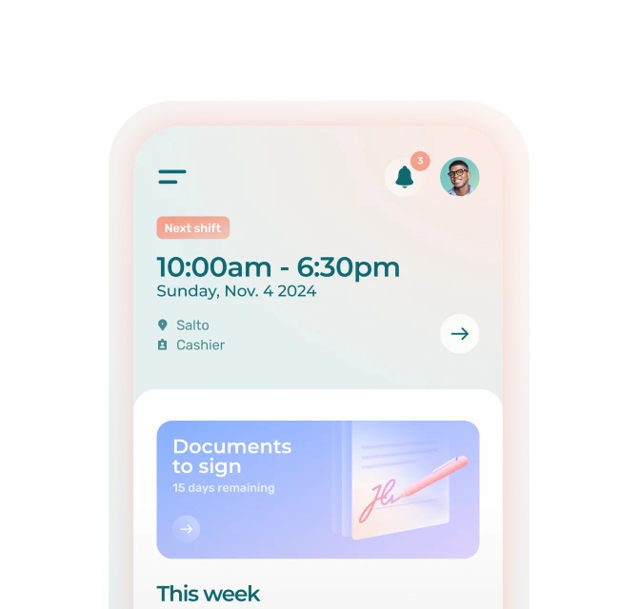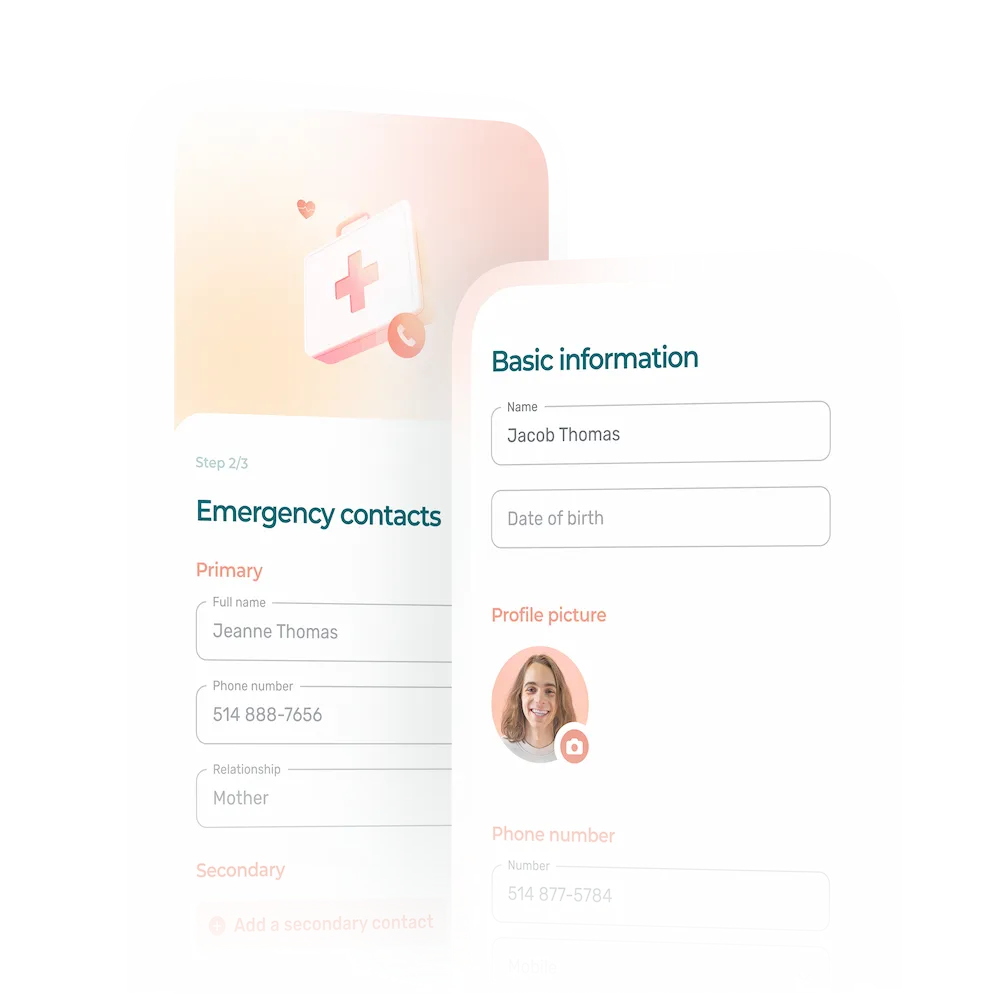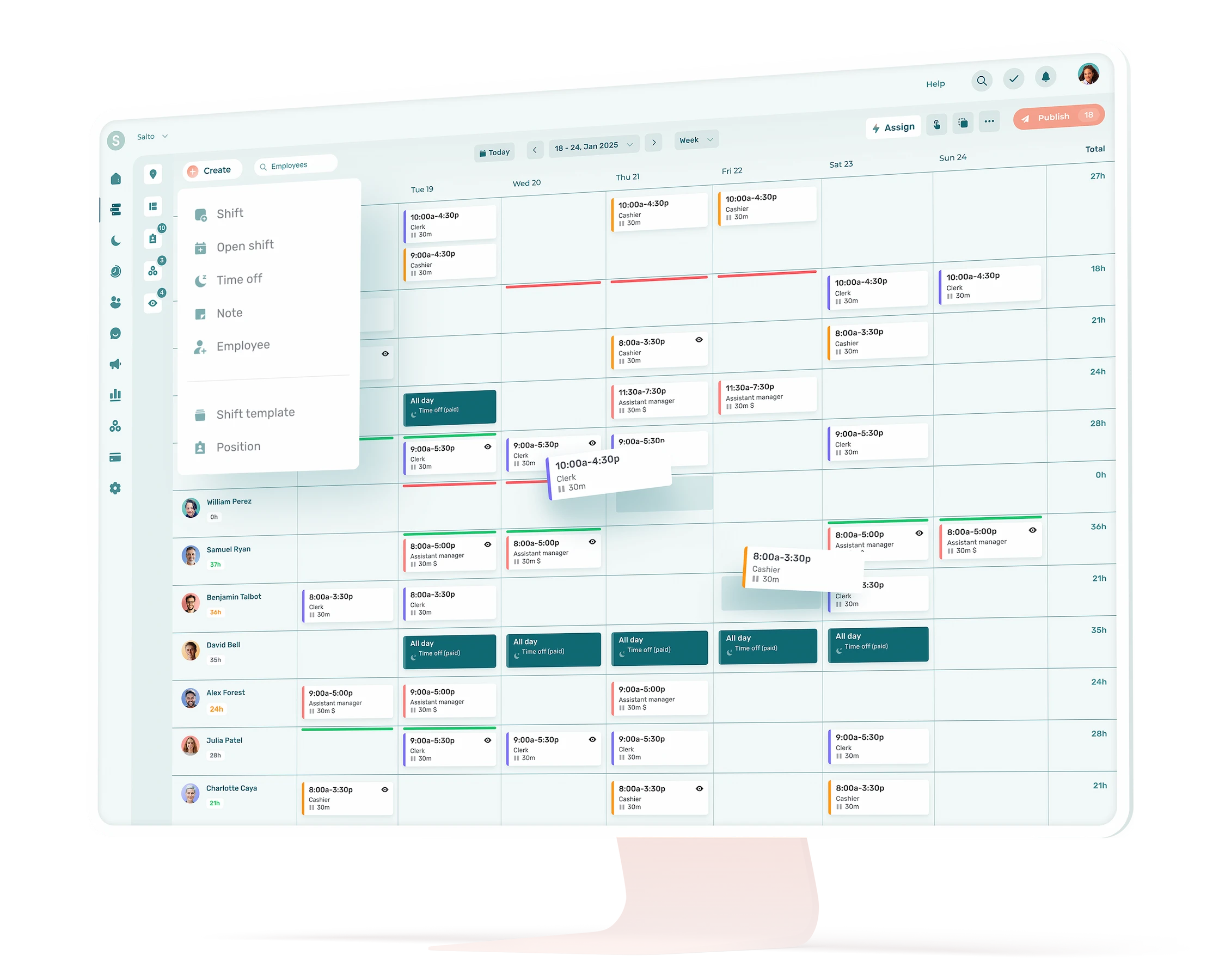Want to get more from your employees? See how the right Learning Management System (LMS) can transform your training programs, boost employee engagement, and drive organizational success.
The Evolution of Employee Training: From Necessary Expense to Smart Investment
According to a report by the Brandon Hall Group, organizations that implement effective employee training strategies improve customer satisfaction by 77% and increase revenues by 36%.
And yet, many organizations once viewed training as a necessary expense with no clear immediate returns. During times of financial strain, training budgets were often the first to be cut.
The business landscape has since evolved dramatically—thanks to things like technology, global competition, and an increasingly skilled workforce, among other factors. Companies now understand the value of investing in employee development. Training is considered a key driver of performance, innovation, and long-term growth.
Online learning is the way of the future. And that’s where a Learning Management System (LMS) comes in.
What Is a Learning Management System?
A learning management system (LMS) is a software platform designed to deliver, manage, and track educational or employee training programs. It provides tools for creating, distributing, and assessing learning content, often incorporating features like course management, progress tracking, quizzes, and certifications.
Learning management systems are widely used in educational institutions, businesses, and other organizations to facilitate e-learning, employee training, and compliance programs.
Why Use an LMS?
An LMS can have a transformative impact on a business. Imagine having all your company’s training resources gathered in one central hub. This is what happens with an LMS. Employees no longer have to hunt for the tools they need to grow their skills—they can simply access them from a single, well-organized platform that streamlines their learning experience.
But that’s just the beginning. Every employee is unique, and so are their training needs. An LMS lets you deliver personalized learning paths tailored to individual goals and roles within your organization. This makes training not just more relevant but also more engaging—a great way to boost employee motivation.
Tracking progress is another game-changing advantage. With a learning management system, you gain insights into how well employees are advancing through their training programs. These analytics help you measure the success of your skills development initiatives and pinpoint areas where additional support might be needed. It’s a great way to support your continuous improvement initiatives.
Since flexibility is key in today’s fast-paced work environment, the online access of an LMS lets employees learn at their own pace. They can fit training into their schedules without disrupting day-to-day operations. Having the adaptability to allow your organization to keep running smoothly while still prioritizing professional development is a definite win-win.
→ Download our Free Professional Development Plan Word Template
And then there’s the cost savings. An LMS digitizes training materials and reduces the need for things like in-person sessions, travel, and logistics. In other words, it makes employee education more budget-friendly and efficient. And when industry practices or regulations change, updating your training materials is a breeze—no need for costly reprints or complex overhauls.
Functionalities and Features of an LMS
Like all the other digital platforms you use in your organization—like your employee scheduling software—it’s essential to understand the various functionalities and features that make LMS systems so effective for training and development.
Here are the top reasons why forward-thinking organizations consider their LMS an essential tool:
1. Course Creation and Management
With an LMS, you can create, organize, and manage various types of learning content, such as videos, quizzes, documents, and presentations, all in one place.
2. User Management
You can easily manage user roles, assign courses to specific employees, track progress, and ensure that each learner has access to the appropriate training materials when the time is right.
3. Progress Tracking and Reporting
LMS platforms let you track learner progress in real time, providing reports on completion rates, quiz scores, and other performance metrics.
4. Assessment and Certification
Many LMS come with built-in testing and assessment tools that let you evaluate learners’ understanding of the material, and offer certificates upon successful completion of courses.
5. Mobile Access
Many LMS platforms are mobile-friendly. Employees can access training content on-the-go, anytime and anywhere, making learning flexible and convenient.
6. Gamification
To increase engagement, LMS often include gamified elements such as badges, leaderboards, and points. These encourage friendly competition and motivation.
7. Integration with Other Systems
A good LMS can integrate with your HR software, enterprise resource planning (ERP) systems, and other tools, providing seamless data flow and enhanced functionality.
8. Social Learning Features
Social learning tools like forums, chat rooms, and discussion boards help foster collaboration and peer-to-peer learning among employees.
9. Multimedia Support
LMS platforms support a variety of multimedia formats, including video, audio, and interactive elements. This allows you to create more dynamic and engaging learning experiences.
10. Scalability
As your organization grows, an LMS can scale to meet the increasing demand for training, accommodating new users and expanding content without compromising performance.
Why Is Skills Development Important?
Investing in your workforce’s growth can benefit both your employees and your company in ways that cannot be overstated.
Do a quick Google search and you’ll see that there’s a direct link between training and improved performance. Well-trained employees are typically more competent and efficient in their roles. By providing the right development opportunities, employees gain the knowledge and skills they need to excel in their tasks. If you’re looking for ways to achieve your business goals, employee training is a great first step.
CFO asks CEO: “What happens if we invest in developing our people and then they leave us?”
CEO: “What happens if we don’t, and they stay?”
Developing employee skills will also fuel innovation and adaptability within your organization. Employees who receive ongoing training are not only better equipped to handle their responsibilities, but they’re also more likely to bring fresh ideas to the table. Knowledgeable employees can adjust more swiftly to changes in the workplace, helping your business remain agile and competitive.
Need more reasons to invest in your staff’s skill development? How about better employee motivation and engagement? When employees see that their company is committed to their professional growth, they are more likely to feel a sense of loyalty and appreciation. In turn, this makes them more motivated to contribute and succeed, which can strengthen employee retention.
Investing in professional development can also reduce employee turnover. If you give your employees access to opportunities for career advancement, they’ll be far less likely to seek new positions elsewhere. Instead of spending money on the costs associated with high turnover, including the recruiting and training of new hires, why not invest in your top employees to hold onto them for as long as possible?
In today’s rapidly changing market, staying competitive requires organizations to be adaptable. Ongoing skill development ensures your employees have the tools to keep up with evolving market demands and job requirements—essential if you want your business to stay ahead of the curve.
Last but not least, investing in employee training can strengthen your organization’s employer brand. Companies that prioritize skills development are often seen as attractive places to work, making it easier to recruit top talent. A reputation for supporting employee growth can be a key differentiator when competing for the best candidates, especially in industries with high competition, such as healthcare, hospitality or retail.
How to Choose the Best LMS for Your Business
Choosing the right learning management system can be a daunting task, with all the options available. So we’ve put together a reliable guide for weeding through the options to find the LMS platform that will best support your company’s training and development needs.
Pinpoint Your Needs
First start by identifying your organization’s training needs. Think about the objectives you want to achieve and the types of content you need to deliver. How many users will need access to the system? What specific features are essential for your team, such as progress tracking, personalized learning paths, or assessment tools? Having a clear understanding of your goals from the outset will help you narrow down the options.
Research Different LMS
Next, thoroughly research the available LMS options. Look beyond the marketing materials. Check user reviews, compare features, read independent product analyses, and seek professional recommendations. These insights will tell you which LMSs are highly regarded and whether they’ll meet your requirements. See if there are any industry-specific LMS that would better suit your requirements.
Establish Budget
Now it’s time to determine your budget. Consider not only the initial purchase cost but also ongoing expenses, such as maintenance or monthly fees, user training, and long-term support. Set a clear budget early on; it will help you stay focused on solutions that are financially viable for your organization.
Start a Free Trial
Once you’ve narrowed your options down to your two or three top choices, request demos or free trials. This hands-on experience will let you test the functionality of the LMS and assess how user-friendly the interface is. Exploring the features firsthand is a great way to determine if the LMS will meet your needs on a day-to-day basis.
Other Things to Consider When Choosing an LMS
Compatibility and Integration
Make sure the LMS you’re considering works well with your existing systems, such as HR software, collaboration tools, or content management systems. Integration is key to ensuring seamless workflows across your organization.
Quality of Customer Support
A reliable LMS provider should offer responsive and effective support to assist with any issues or questions that arise. Check reviews or ask the provider about their support processes to ensure you’ll receive the help you need when you need it.
Scalability and Flexibility
As your company evolves, your training needs may change. Choose an LMS that can grow with your organization, offering customization options and adaptability to meet future demands.
Data Security
Since an LMS will house sensitive employee information, the system must have strong data protection features, such as encryption, compliance with privacy regulations, and robust access management.
Invest in Skills Development and Watch Your Business Grow
Ultimately, an LMS is an investment in your workforce, helping them to acquire the skills and knowledge they need to excel in their current and future roles. It also fosters adaptability and competence—key traits for staying competitive in a business world that’s constantly evolving.
Bottom line, don’t think of a learning management system as just another tool; it can be a powerful strategic advantage for your business.
What Is an Example of an LMS?
An example of an LMS is Moodle, an open-source platform widely used by educational institutions and businesses for creating and delivering online courses. It allows for a range of learning activities, including assessments, discussions, and content delivery.
What Are the Three Major Types of Learning Management Systems?
The three major types of LMS are:
- Enterprise LMS: These are used by large organizations to manage training across different departments.
- Academic LMS: These are primarily used in schools, colleges, and universities to manage courses and student learning.
- Open-source LMS: A flexible and customizable LMS that’s typically free to use, allowing institutions or companies to modify and adapt it according to their specific needs.
What Industries Use LMS?
Learning management systems are used across a wide range of industries to address their unique training challenges. For example:
- Retail: For training employees on customer service, product knowledge, and sales techniques.
- Hospitality: For onboarding staff quickly, ensuring compliance with safety regulations, and improving service quality.
- Healthcare: For facilitating continuous education, compliance training, and skills updating for medical staff.
What Is the Most Popular LMS?
The most commonly used LMS is TalentLMS. Its ease of use, scalability, and customizable features make it a popular choice for corporate training in many industries.
Is Google Classroom an LMS?
Yes, Google Classroom is a type of LMS. Although it’s primarily designed for educational institutions, it does have many core LMS features like content sharing, assignment submission, and grading. This makes it a useful tool for managing class activities.











